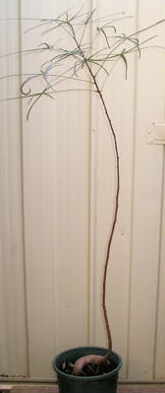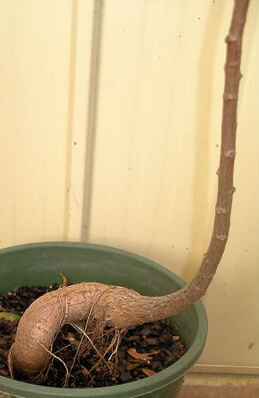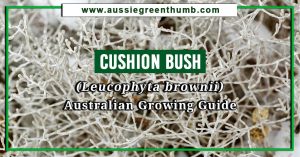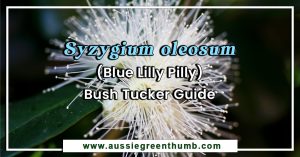How to Bonsai Australian Native Plants
The art of Bonsai is something that has always interested me but was something I was always reluctant to take up mainly because of my lack of patience. Recently though I came across a gardening blog with a video of a Banksia ericifolia Bonsai. It was amazing to hear how this bonsai had grown for the last 20 plus years and the fact that it now had a flower on it.
Afterwards I then recalled a book I’d read a few years ago about how to bonsai Australian native plants.
More...
Banksia integrifolia as Bonsai
Looking back now though, I now remember that this book was probably the inspiration for my Banksia integrifolia that I’d been growing in the same bonsai pot for the last 6 years. Looking at this plant today it now amazes me how it has survived the last 6 years. It’s certainly been the victim of neglect.
I don’t think I’ve ever fertilised it and I can’t even remember giving it any Seasol although the chances are it probably has had some from time to time. It now resides under a window sill with some other neglected plants, it gets about 3-5 hours of sunlight a day and only gets watered when I remember.
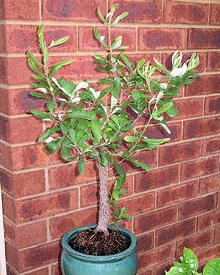
Banksia integrifolia - December 2003
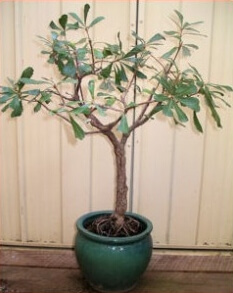
Banksia integrifolia - June 2009
So now the more I think about it I come to realise what great bonsai specimens Australian native plants are. Some of their features are obviously their drought tolerance, most of them respond really well to pruning and despite a popular misconception they are relatively easy to transplant.
Here’s a bonsai Banksia serrata I found in a Nursery a few years ago. These are a popular bonsai choice as they develop a large swollen trunk over time and certainly look interesting grown as a bonsai.
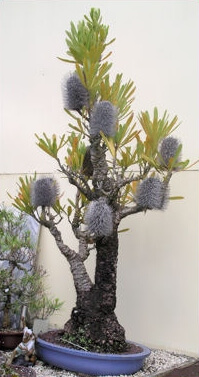
Banksia serrata Bonsai
I once had a prostrate version of this Banksia growing in my garden called Banksia serrata ‘Pygmy Possum’. Just before we shifted house I dug it up and transplanted it into a pot. Part of the operation involved cutting back most of the foliage and to my surprise the short trunk had actually grown large and swollen as the perfect blank canvas for a potential bonsai.
I kept it in the pot for a couple of years and then, not having the patience, decided to plant it in my new garden to grow as it pleased. Unfortunately it fell victim to the phosphorus toxicity in my soil and so for me I suppose it was an opportunity lost.
As far as Banksia serrata goes, I think that Banksia aemula might be a better option as a Bonsai. This Banksia is very similar in appearance to Banksia serrata, but it is quicker growing, has smaller leaves and the yellow flowers I feel are much more attractive.
The other point about Banksia aemula, despite being rarely seen in garden centres, is that it is very easy to grow, has deep green leaves with yellow flowers held at the end of the branches and comes in tree as well as shrub forms.
Banksia integrifolia as I said before is also a good subject for bonsai but this tree Banksia also comes in a prostrate form called Banksia integrifolia ‘Roller Coaster’. This Banksia can also form a large trunk very quickly and like the ‘Pygmy Possum’ would make a great bonsai in a tall container with cascading branches.
How to Accelerate Your Bonsai's Growth
Now here’s a little trick you can use if you want to accelerate the growth of your bonsai, especially if you’re using a prostrate plant as described above. Now the bonsai purists will probably not endorse this practice but what you can do if you like is plant your subject in a large container or even plant it into the ground.
You will find that your plant will grow a lot faster and you can train it and prune it as you require. When your subject has reached the desired size you can then dig it up and transplant it into a smaller pot. It’s then just a case of reducing the size of the root ball over time (or even straight away) until you get it to fit the container you require.
Another method you can use to shortcut the process is to find a semi advanced plant in a nursery. One of my favourite things to do is visit nurseries in out of the way places. These nurseries are the ones that quite often have old stock that has been sitting out the back somewhere for the last few years amongst a whole lot of other stuff.
It’s normally root bound and growing crooked and twisted and quite often has a semi advanced trunk and has an unusual or interesting look to it. I reckon these nurseries are quite often a treasure trove and sometimes an excellent place to find interesting potential bonsai subjects. Here’s a couple below.
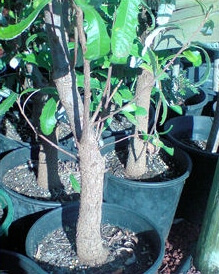
Banksia integrifolia
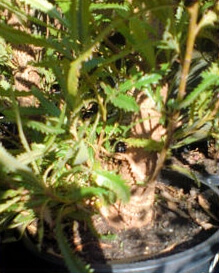
Banksia serrata
They may not be crooked but you could always replant them on an angle and then cut the main trunk just above the smaller side shoots. As far as pruning the root ball goes just soak it in a Seasol solution and cut back to the size desired the same as described above.
Using Acacia howittii for Bonsai
Another plant that I feel would make a great bonsai specimen is the Acacia howittii, commonly known as sticky wattle. This grows into a large shrub or small tree but it also comes in a prostrate version and this is the one I’m talking about. Here is a photo of one growing in my mother’s garden. If you use your imagination you may be able to see the potential here for a bonsai or two.
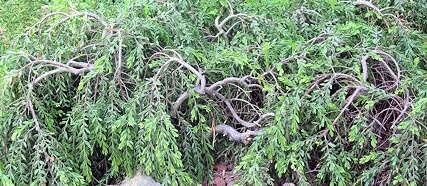
Acacia howittii prostrate would probably suit a Japanese garden.
Now if you were to try Acacia howittii prostrate as a bonsai there may be several ways to go about it;
- You could go about it in the traditional way,
- take a cutting and strike it,
- plant one in the ground and then dig it up and go about in the manner described above,
- Or you could use an existing plant like the one above, find an interesting branch and then use the “aerial layer” technique to propagate it.
All of these methods would work. It all depends on the results that you’re after and the time you have available.
Brachychiton rupestris Bonsai
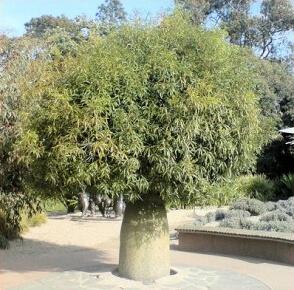
Here’s another Australian native plant that lends itself to become a bonsai. A few years ago I bought two Brachychiton rupestris, aka the Queensland Bottle tree. Both were meant to be planted in the garden.
One did, but the other one seen below, actually developed this twisted swollen trunk, so I just left it in the pot. This one though, I think I may try and bonsai. I’ll probably cut the length of the trunk back and then try to get it to form a canopy, but I’ll have to think about that first.
Lastly, I'd like to write about another little experiment I’ve been conducting for the last 18 months. A few years ago I propagated some Banksia integrifolia to plant in my garden. After I discovered they didn’t like the phosphorus in my garden I was then left with 5 plants that nobody wanted so I decided to turn them into a long term experiment. So here’s what I did.

Banksia integrifolia x 5
First I got an old clay pot and just planted them all together as shown above. The idea being that they will eventually grow into one plant and hopefully form a buttressed trunk similar to say a Moreton Bay Fig. But we’ll see. It will take time.
The best thing about this plant though is it requires little attention and maintenance so it’s just a matter of watering it from time to time.
More Australian Natives for Bonsai
There are lots of Australian native plants that would make great bonsai specimens, Melaleuca (paperbarks), Leptospermum (tea trees), Callistemon (bottlebrushes) are just a few that can be used. It really is up to your personal preference.
So there you go, some of these examples may not be traditional examples of bonsai but you can see what can be done when you let your imagination go wild. Gardening for me is about experimenting and trying new things but you never know where your next inspiration will come from.
I suppose for me it started with the book I read about How to Bonsai Australian Native Plants. Who knows where it will finish!
Published on June 16, 2023 by AGT
Last Updated on February 14, 2024

